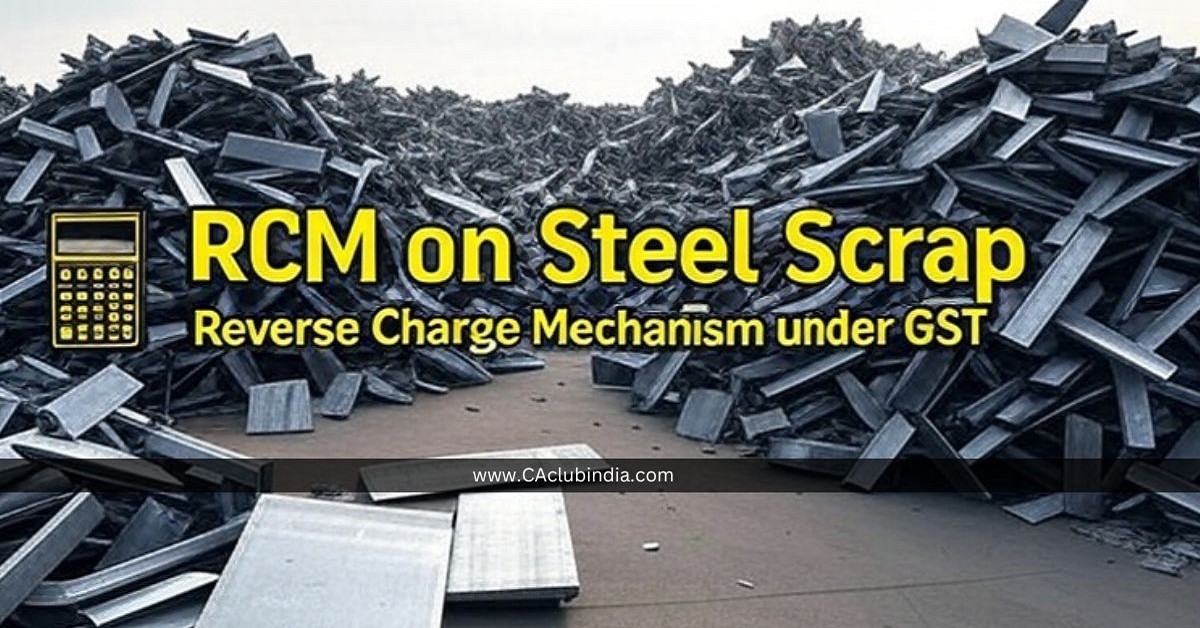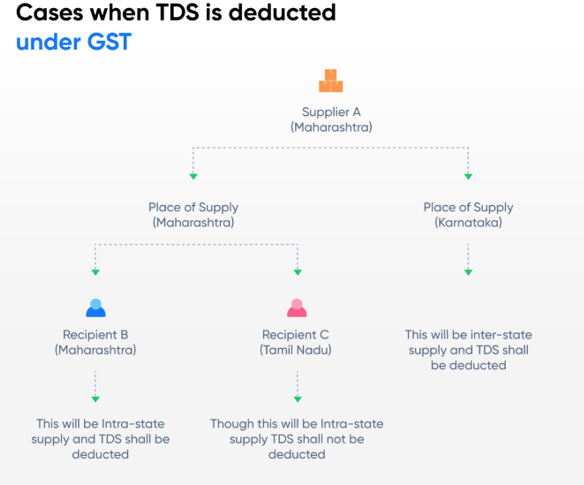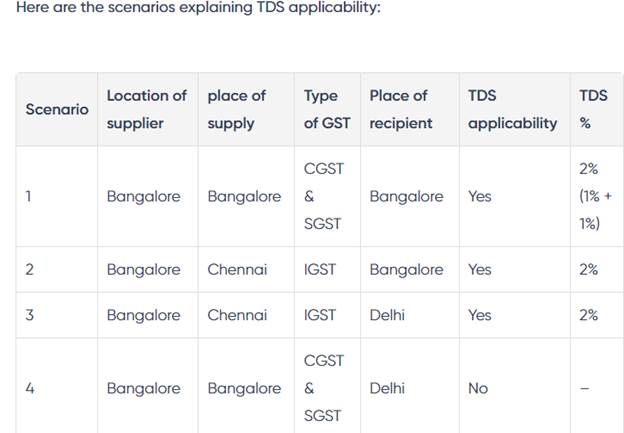Reverse Charge Mechanism (RCM) to be introduced on the supply of metal scrap by an unregistered person to a registered person, provided that the supplier shall take registration as and when it crosses the threshold limit and the recipient who is liable to pay under RCM shall pay tax even if the supplier is under the threshold. A TDS of 2% will be applicable on the supply of metal scrap by a registered person in B2B supply.
Now, the Central Government has notified the GST Council of the recommendation so far as a reverse charge is concerned. The Government has issued Notification No. 06/2024-Central Tax (Rate) dated 08.10.2024 which amends basic notification 4/2017- Central Tax (Rate) dated 28.06.2017 and inserts various metal scraps falling under CTH 72, 73, 74, 75, 76, 77, 78, 79, 80 or 81 for reverse charge with effect from 10.10.2024. Under the Goods and Services Tax (GST) regime in India, Tax Deducted at Source (TDS) applies to specific transactions, including the purchase of metal scrap. Here's a brief overview of the TDS procedure for GST on metal scrap purchases:

1. TDS Applicability: TDS is applicable on the supply of goods or services as specified under Section 51 of the CGST Act, 2017. For metal scrap, the TDS rate is generally 2% of the transaction value.
2. Registration: The buyer who is liable to deduct TDS must be registered under GST. Ensure you have a valid GST registration.
3. Deduction of TDS:
- When making the payment for metal scrap, deduct 2% of the invoice value (excluding GST) as TDS.
- The amount deducted should be reflected in the payment made to the supplier.
4. TDS Certificate: After deducting TDS, the buyer must issue a TDS certificate to the supplier in Form GSTR-7A, which serves as proof of tax deduction.
5. Payment of TDS: The deducted TDS must be paid to the government account by the 10th of the following month in which the deduction was made.
6. Filing Returns: The buyer must file GSTR-7, which includes details of the TDS deducted, along with the payment made. This is usually due by the 10th of the month following the deduction.
7. Supplier's Claim: The supplier can claim credit for the TDS deducted against their output tax liability in their GSTR-3B, provided they have received the TDS certificate.
8. Record Keeping: Maintain proper records of TDS deductions, TDS certificates issued, and all related transactions for compliance and audit purposes.
Similar to the Income Tax Law, the person deducting tax under GST has to issue the TDS certificate in form GSTR-7A to the concerned person within 5 days of depositing the tax to the government. The GST portal will automatically make GSTR-7A available to the deductee on the basis of the GSTR-7 filed.
The CBIC released CGST Notification No. 12/2024 dated 10th July 2024, amending the format of the GSTR-7 return, to allow invoice-level reporting. Taxpayers are required to report the invoice/document details, the amount paid to the deductee liable for TDS, the TDS amount, the value of the transaction, and IGST/CGST/SGST details.
TDS is to be deducted at the rate of 2% on payments made to the supplier of taxable goods and/or services, where the total value of such supply, under an individual contract, exceeds Rs. 2,50,000. No deduction of Tax is required when the location of supplier and place of supply is different from the State of the registration of the recipient.


What is the penalty for non-filing of GSTR-7
If the GST return is not filed on time, then a penalty of Rs 100 under CGST and Rs 100 under SGST shall be levied, and the total will be Rs 200 per day. However, the maximum late fee should not exceed Rs 5,000. There is no late fee on IGST in case of delayed filing.
Along with late fees, interest has to be paid at 18% per annum. It has to be calculated on the TDS paid. The period for interest calculation will be from the next day of the due date of filing to the payment date.








 CAclubindia
CAclubindia
